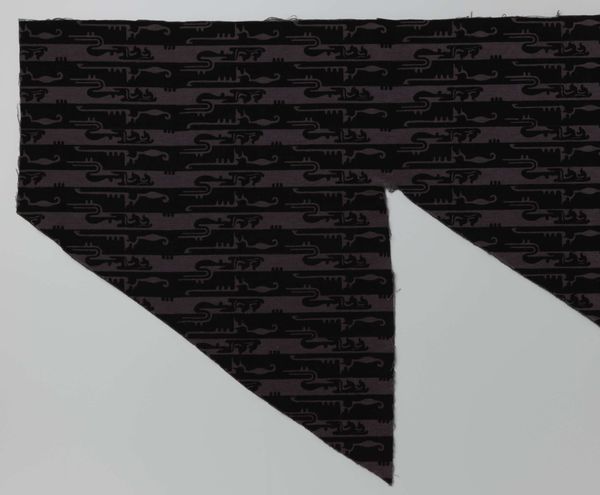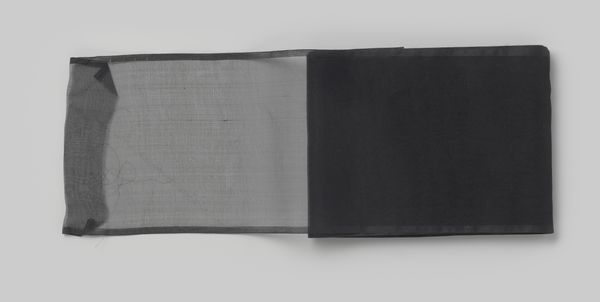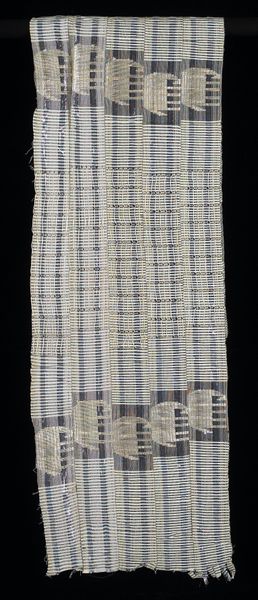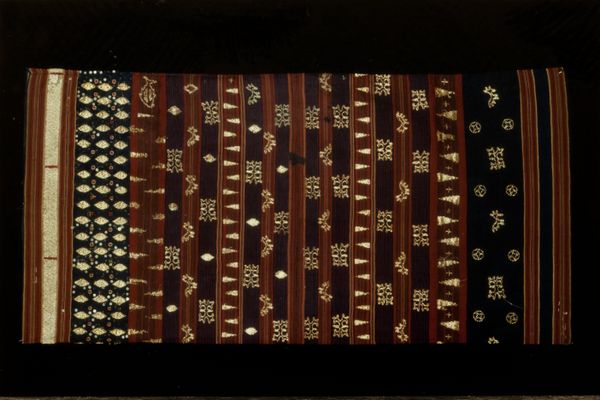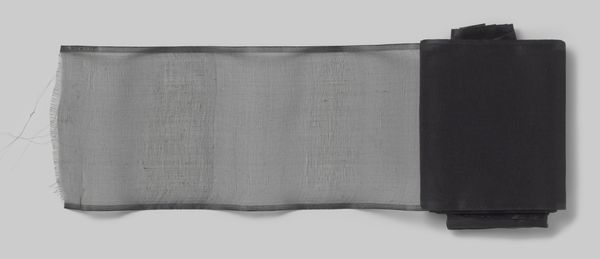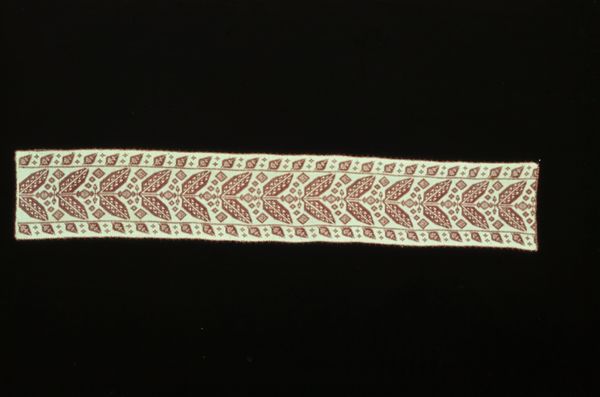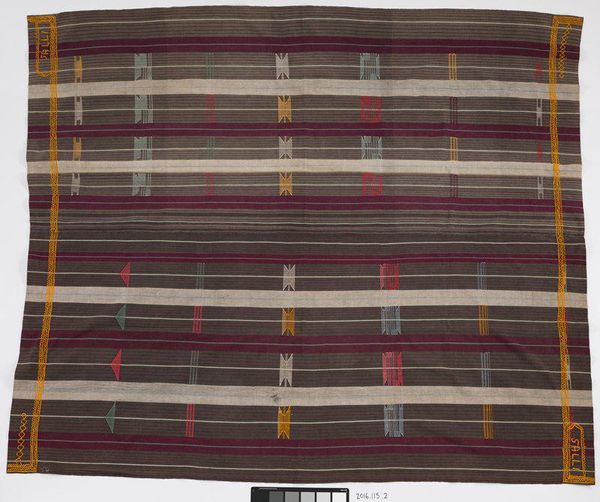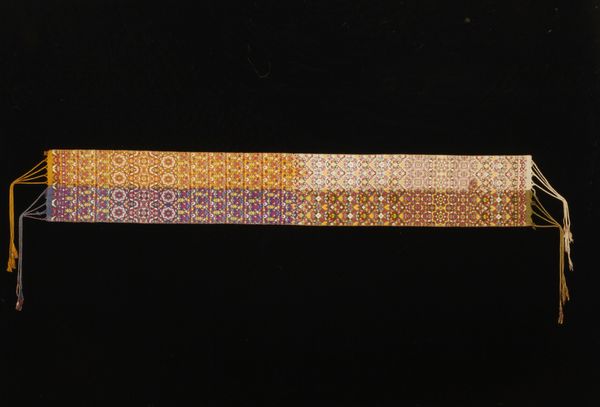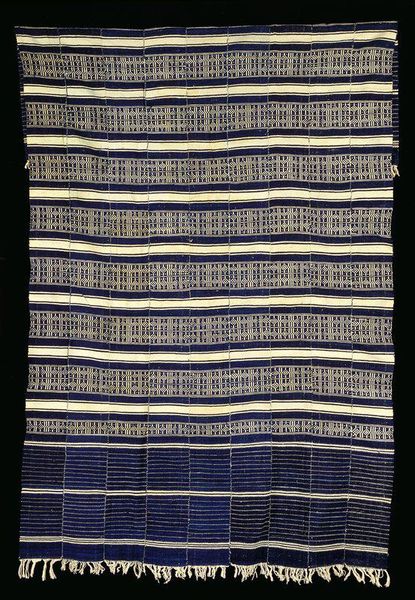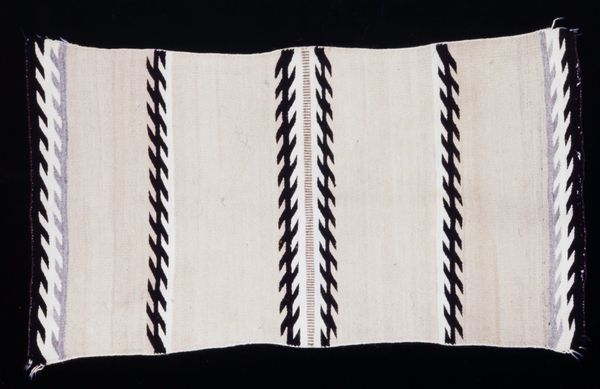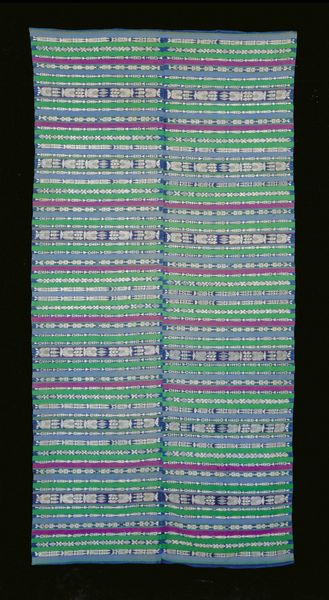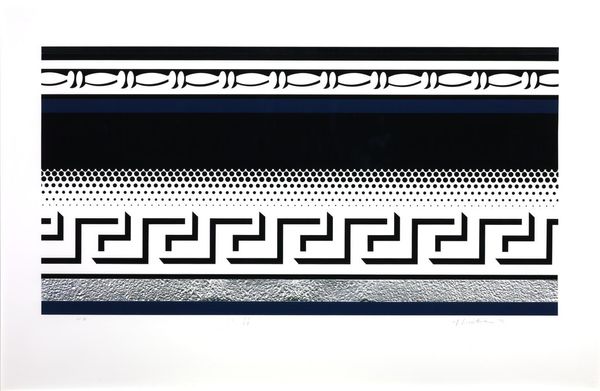
fibre-art, panel, silk, weaving, textile, cotton
#
african-art
#
fibre-art
#
panel
#
silk
#
weaving
#
textile
#
cotton
#
yoruba-art
Dimensions: 57 × 77 5/8 in. (144.78 × 197.17 cm)
Copyright: No Known Copyright
Curator: Up next, we have an intriguing textile piece identified as simply "Panel," of Yoruba origin, dating back to around the 20th century. It's part of the collection here at the Minneapolis Institute of Art. Editor: It feels so orderly, doesn't it? The lines are incredibly steady, precise. But the color scheme also speaks to a quiet elegance; not showy, more a considered composure. Almost meditative. Curator: Absolutely. Constructed with silk, cotton and other fibres, this panel showcases a remarkable level of craft. When we think of fibre art, it’s important to remember how it has long served not just functional, but also expressive and symbolic purposes, particularly across many cultures. The regularity you noted is central to understanding its significance. Editor: How so? I mean, the way those linear forms seem to repeat—it makes me consider, naturally, the labor, time, and potential social function, the context for weaving. Also the pattern seems to integrate written phrases or words of sorts into the textile. Is there information available on the process of weaving that would better reveal insight into labor concerns? Curator: We believe the text within is devotional in nature; the act of weaving became, itself, a form of spiritual dedication, each repeated phrase imbuing the textile with power and prayer. You've also highlighted a critical tension: while the finished piece conveys elegance and refinement, the physical act of creation, the hours poured into each thread, carries a story of often undervalued labor. The contrast makes you reflect upon the historical and social aspects in production, as well as potential uses within private/public/religious life. Editor: It does beg that question of labor… the inherent worth we assign to painstaking craftsmanship, and who gets to define “art.” Thinking materially also gets me pondering its original intended application: Was it apparel? Decoration? Does this panel reveal cultural identity? Or perhaps religious beliefs? It appears delicate but substantial. Curator: Perhaps the true beauty lies in that quiet subversion—elevating the everyday through devotion and craft. The “Panel” invites us to see the sacred woven into the fabric of daily life. I find myself pondering who the weaver might have been. A master of the form. What a statement about Yoruba resilience. Editor: And to appreciate the subtle artistry, acknowledging the materials themselves, in cotton and silk, along with the intensive weaving that transforms simple fibers into complex messages.
Comments
No comments
Be the first to comment and join the conversation on the ultimate creative platform.
